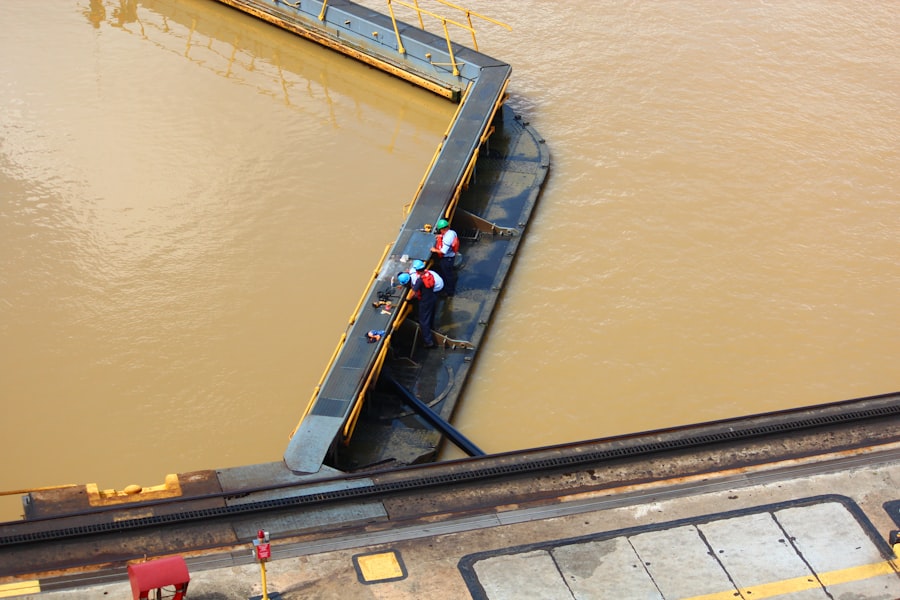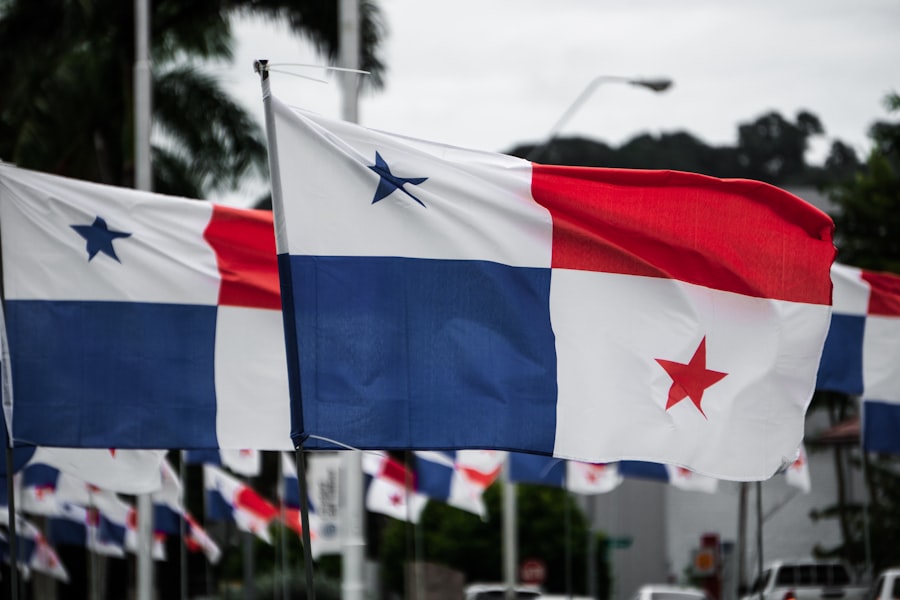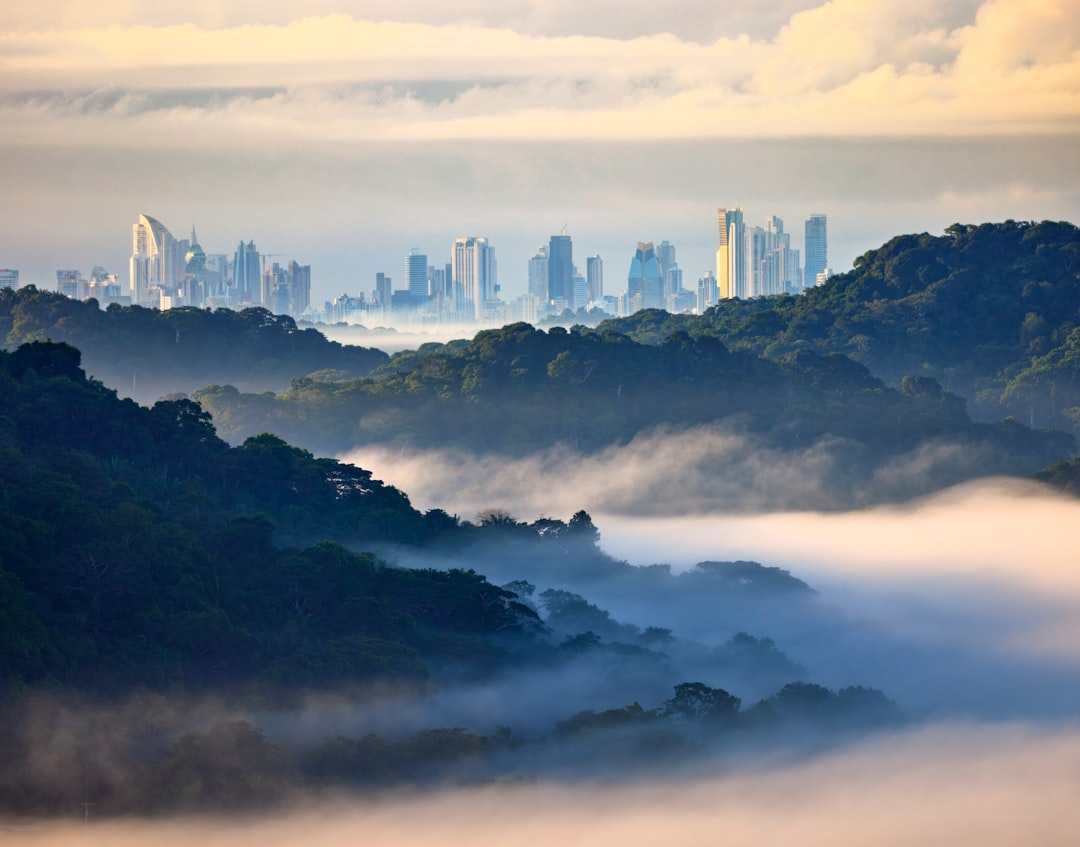The Panama Canal and the Drake Passage are two of the most significant waterways in the world, each serving as a crucial link for maritime navigation. The Panama Canal, an engineering marvel, connects the Atlantic and Pacific Oceans, allowing ships to avoid the lengthy and perilous journey around the southern tip of South America. In contrast, the Drake Passage, located between the southern tip of South America and Antarctica, is known for its tumultuous waters and unpredictable weather conditions.
Both routes have their unique characteristics, challenges, and historical significance, making them essential points of reference for maritime navigation. Understanding these two waterways is vital for anyone involved in shipping, trade, or exploration. The Panama Canal has revolutionized global trade by significantly reducing travel time for vessels, while the Drake Passage remains a critical route for those venturing to Antarctica or navigating between the Atlantic and Pacific Oceans.
This article will delve into the history, geography, navigation challenges, and advantages and disadvantages of both the Panama Canal and the Drake Passage, ultimately comparing them to help determine which route may be best suited for various maritime journeys.
Key Takeaways
- The Panama Canal is a man-made waterway connecting the Atlantic and Pacific Oceans, while the Drake Passage is a natural passage between South America and Antarctica.
- The construction of the Panama Canal was a significant engineering feat, reducing the travel time and distance for ships traveling between the two oceans.
- The Panama Canal is approximately 50 miles long and features a series of locks to lift ships to the level of Gatun Lake before lowering them back down to sea level.
- Navigation through the Panama Canal requires careful consideration of ship size, draft, and maneuverability due to narrow channels and sharp turns.
- Advantages of the Panama Canal include reduced travel time and fuel consumption, while disadvantages include high tolls and limited capacity for larger vessels.
- The Drake Passage is a treacherous stretch of water known for its strong winds and rough seas, but it is the shortest route between the Atlantic and Pacific Oceans.
- The Drake Passage is characterized by its unpredictable weather, strong currents, and icebergs, making navigation challenging and risky.
- Navigating the Drake Passage offers the advantage of a direct route between the oceans, but it also poses the risk of encountering extreme weather conditions and rough seas.
- When comparing the Panama Canal and the Drake Passage for navigation, factors such as distance, time, cost, and vessel capabilities must be carefully considered.
- Ultimately, the choice between the Panama Canal and the Drake Passage depends on the specific needs and capabilities of the vessel, as well as the preferences of the crew and passengers.
History and significance of the Panama Canal
The history of the Panama Canal is a tale of ambition, engineering prowess, and international cooperation. Construction began in the early 20th century under French leadership but was fraught with challenges, including disease and financial difficulties. After the French effort failed in 1889, the United States took over the project in 1904, ultimately completing it in 1914.
The canal’s opening marked a monumental achievement in engineering and transformed global trade by providing a shortcut for ships traveling between the Atlantic and Pacific Oceans. The significance of the Panama Canal extends beyond its engineering marvel; it has played a pivotal role in shaping international trade routes. By drastically reducing travel time—by as much as 8,000 nautical miles—the canal has facilitated commerce between nations and contributed to economic growth in various regions.
The canal’s strategic importance was further underscored during World War II when it became a vital military supply route. Today, it continues to be a critical artery for global shipping, with thousands of vessels transiting its waters each year.
Geography and characteristics of the Panama Canal

Geographically, the Panama Canal stretches approximately 50 miles across the Isthmus of Panama, linking the Caribbean Sea to the Pacific Ocean. The canal features a series of locks that raise and lower ships over the mountainous terrain of Central America. The Gatun Lake, an artificial lake created during construction, serves as a key component of the canal’s operation, allowing vessels to traverse the isthmus efficiently.
The characteristics of the Panama Canal are defined by its engineering innovations and natural features. The locks are among the largest in the world, with each lock chamber measuring 110 feet wide and 1,000 feet long. This design allows for the passage of large vessels known as Panamax ships.
The canal’s construction also involved significant environmental considerations, as it required altering local ecosystems and managing water levels in Gatun Lake. Despite these challenges, the canal remains a testament to human ingenuity and continues to adapt to modern shipping demands.
Navigation challenges and considerations in the Panama Canal
| Navigation Challenges | Considerations |
|---|---|
| Narrow waterways | Require precise maneuvering |
| Heavy traffic | Need for efficient communication and coordination |
| Strong currents | Impact on ship control and stability |
| Variable weather conditions | Adaptation to changing circumstances |
Navigating the Panama Canal presents several challenges that mariners must consider. One of the primary concerns is the size limitations imposed by the locks. While Panamax vessels can transit through the canal, larger ships known as New Panamax or Neo-Panamax vessels require additional infrastructure that was added during the canal’s expansion in 2016.
This expansion allowed for larger vessels to pass through but also introduced new complexities in terms of scheduling and traffic management. Weather conditions can also pose challenges for navigation in the canal. The region experiences a tropical climate with heavy rainfall during certain seasons, which can affect visibility and water levels.
Additionally, strong currents can be encountered in various sections of the canal, requiring skilled navigation to ensure safe passage. Mariners must also be aware of potential delays due to maintenance work or traffic congestion, as hundreds of vessels transit through the canal daily.
Advantages and disadvantages of navigating the Panama Canal
Navigating through the Panama Canal offers numerous advantages that have made it a preferred route for many shipping companies. The most significant benefit is undoubtedly time savings; by avoiding the lengthy journey around Cape Horn, vessels can reach their destinations more quickly. This efficiency translates into reduced fuel costs and lower overall shipping expenses, making it an attractive option for businesses engaged in international trade.
However, there are also disadvantages associated with using the canal. The tolls charged for passage can be substantial, particularly for larger vessels. These fees can impact shipping costs and may lead some companies to seek alternative routes despite the time savings offered by the canal.
Additionally, as mentioned earlier, navigation challenges such as size limitations and weather conditions can complicate transit through this vital waterway.
History and significance of the Drake Passage

The Drake Passage has a rich history that is intertwined with exploration and maritime adventure. Named after Sir Francis Drake, who navigated these waters in the late 16th century during his circumnavigation of the globe, this passage has long been recognized as a critical route for explorers seeking to reach Antarctica or venture into uncharted territories. Its historical significance is underscored by its role in facilitating scientific research and exploration in one of the most remote regions on Earth.
The Drake Passage is not only significant for its historical context but also for its ecological importance. It serves as a vital conduit for ocean currents that influence global climate patterns and marine biodiversity. The passage is home to diverse marine life, including whales, seals, and various seabird species that thrive in its nutrient-rich waters.
Geography and characteristics of the Drake Passage
Geographically, the Drake Passage spans approximately 600 miles between Cape Horn at the southern tip of South America and Antarctica. It is characterized by its deep waters and strong currents that result from the confluence of several oceanic systems. The passage is known for its rough seas and unpredictable weather patterns, making it one of the most challenging maritime routes in the world.
The characteristics of the Drake Passage are defined by its unique geographical features and climatic conditions. The waters are often turbulent due to strong winds and currents that can create large swells. This unpredictability poses significant challenges for vessels attempting to navigate through this region.
Despite these difficulties, many adventurers and researchers are drawn to the Drake Passage for its stunning natural beauty and rich biodiversity.
Navigation challenges and considerations in the Drake Passage
Navigating through the Drake Passage presents numerous challenges that require careful planning and skilled seamanship. One of the most significant concerns is weather variability; storms can develop rapidly, leading to dangerous conditions for vessels at sea. Mariners must be prepared for high winds, large waves, and sudden changes in visibility that can complicate navigation.
In addition to weather-related challenges, vessels must also contend with strong currents that can affect their course and speed. The confluence of different oceanic systems creates complex hydrodynamic conditions that require constant monitoring. Navigators must be adept at using advanced technology to track weather patterns and ocean currents to ensure safe passage through this treacherous waterway.
Advantages and disadvantages of navigating the Drake Passage
Navigating through the Drake Passage offers several advantages that appeal to certain types of maritime ventures. For researchers and explorers heading to Antarctica, this route is often essential for reaching their destinations quickly and efficiently. The passage provides access to some of the most remote regions on Earth, allowing scientists to conduct valuable research on climate change and marine ecosystems.
However, there are notable disadvantages associated with traversing this challenging waterway. The unpredictable weather conditions can lead to dangerous situations for vessels, resulting in delays or even accidents if not navigated carefully. Additionally, fuel consumption tends to be higher due to rough seas, which can increase operational costs for shipping companies.
As such, while navigating through the Drake Passage may be necessary for some expeditions, it requires careful consideration of potential risks.
Comparing the Panama Canal and the Drake Passage for navigation
When comparing the Panama Canal and the Drake Passage for navigation purposes, several factors come into play that can influence a mariner’s choice of route. The Panama Canal offers a more controlled environment with established infrastructure designed specifically for facilitating maritime traffic. Its time-saving benefits make it an attractive option for commercial shipping between major global markets.
In contrast, while navigating through the Drake Passage may be essential for certain exploratory missions or scientific research endeavors, it presents significant challenges that require experienced crews and well-equipped vessels. The unpredictable nature of this passage means that it may not be suitable for all types of maritime operations. Ultimately, choosing between these two routes depends on various factors such as destination, vessel size, cargo type, and operational priorities.
For commercial shipping focused on efficiency and cost-effectiveness, the Panama Canal is often preferred. However, for those seeking adventure or conducting research in remote regions like Antarctica, navigating through the Drake Passage may be unavoidable despite its inherent risks.
Choosing the best route for your journey
In conclusion, both the Panama Canal and the Drake Passage hold immense significance in maritime navigation but cater to different needs within this realm. The Panama Canal stands out as an engineering triumph that has transformed global trade by providing a swift connection between two major oceans while minimizing travel time for vessels engaged in commercial shipping. Its advantages include reduced costs and efficient transit times but come with considerations such as tolls and size limitations.
Ultimately, mariners must weigh their options carefully when choosing between these two routes based on their specific objectives—whether they prioritize efficiency or adventure will dictate their choice of passage on their journey across these iconic waterways.
The Panama Canal and the Drake Passage are two critical maritime routes that serve different purposes and present unique challenges for global shipping. The Panama Canal, a man-made waterway, offers a shortcut between the Atlantic and Pacific Oceans, significantly reducing travel time for vessels. In contrast, the Drake Passage, a natural sea route located between the southern tip of South America and Antarctica, is known for its treacherous waters and unpredictable weather conditions. For those interested in exploring more about these fascinating maritime routes and their geographical significance, you can find additional insights in a related article on MyGeoQuest.
WATCH NOW! Drake Passage: Earth’s Deadliest Waters Revealed
FAQs
What is the Panama Canal?
The Panama Canal is a man-made waterway that connects the Atlantic Ocean to the Pacific Ocean. It cuts across the Isthmus of Panama and allows ships to avoid the long and treacherous journey around the southern tip of South America.
What is the Drake Passage?
The Drake Passage is the body of water between the southern tip of South America and the northern tip of Antarctica. It is known for its rough seas and challenging sailing conditions.
How do the Panama Canal and Drake Passage compare in terms of navigation?
The Panama Canal provides a much easier and quicker route for ships to travel between the Atlantic and Pacific Oceans, as it eliminates the need to sail around the southern tip of South America. On the other hand, the Drake Passage is known for its challenging sailing conditions, with strong winds and rough seas making it a difficult and potentially dangerous route for ships.
What are the advantages of using the Panama Canal over the Drake Passage?
The Panama Canal offers a much shorter and safer route for ships traveling between the Atlantic and Pacific Oceans. It also saves time and fuel costs for shipping companies, as well as reducing the risk of encountering hazardous weather conditions in the Drake Passage.
Are there any disadvantages to using the Panama Canal instead of the Drake Passage?
One potential disadvantage of using the Panama Canal is the cost associated with passing through the canal, as ships are required to pay tolls based on their size and cargo capacity. Additionally, the Panama Canal has size limitations, so larger ships may not be able to use this route.
Which route is more commonly used by ships for transoceanic travel?
The Panama Canal is the more commonly used route for transoceanic travel, as it provides a more efficient and safer passage between the Atlantic and Pacific Oceans. The Drake Passage is primarily used by scientific research vessels and adventurous travelers exploring Antarctica.
